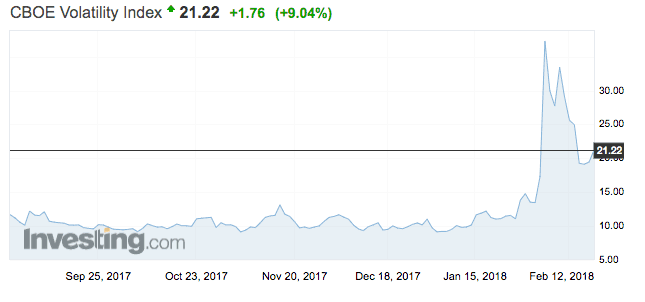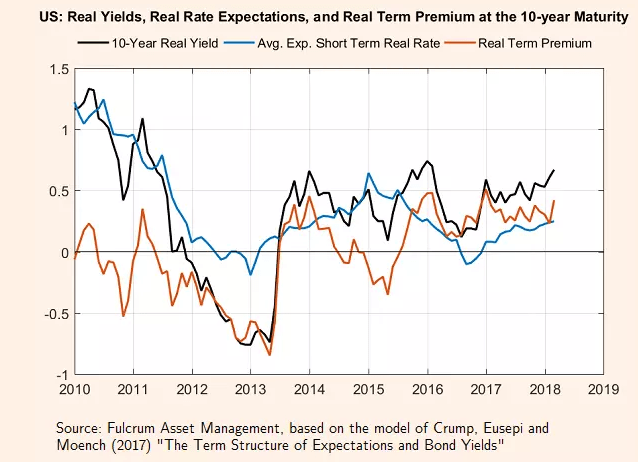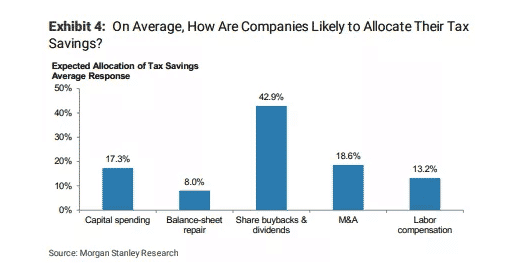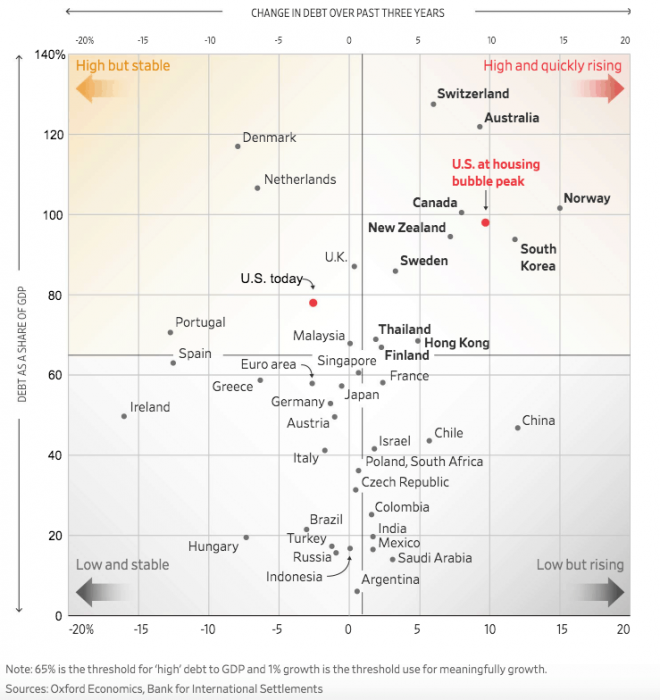Rising real yields, household debt and ECB tightening
The new week in the US is just beginning today after a long holiday weekend. And I have a few things on my mind. So this will be a potpourri daily post. The big issue is the connection between volatility and rising real yields in the US. But below are a few others as well.
Home country bias
One thing still on my mind is the rotation into emerging markets. If you haven’t seen my post on that from last night, take a look here. The issue is that home country bias is a big issue in investing. Therefore, rotating into emerging markets, as Jeremy Grantham recommends, goes against retail investor psychology. If those markets fall, you will see a big pullback from foreigners. Time and again we see hot money flows leave emerging markets and flee to safe markets when there is volatility. I don’t expect that to change anytime soon.
Volatility due to real yields rising
Speaking of volatility, the VIX is still up.

Source: Investing.com
I think the recent market volatility will continue for the foreseeable future. Think of it as a regime shift. We are going from a market protected by the Fed to one in which the Fed is dragging the market in tow. As the Fed has begun lifting rates, the market has consistently proved to underestimate the Fed’s conviction. And I believe this trend will continue, driving interest rates higher. This will, in turn, create equity market volatility.
If you want to look at this in terms of valuation, a lot of the equity volatility is due to rising real rates. After the Great Recession, average expected real short term rates plummeted from over 1%. At times, this rate went negative – once in late 2012 and a second time in 2015. But real short-term yields began to climb in 2015.
Source: Financial Times
They are still relatively low at about a quarter of a percent. However, the term-premium has also risen as deflation risks have subsided. And that has raised the real 10-year yield. In short, discount rates are rising. And that’s bad for equities.
What do Walmart earnings tell us?
Here’s a third topic to think about: Walmart. The reason I think Walmart is interesting is because of the tax cuts. Back in January Walmart announced an increase in minimum pay rates. The company also distributed one-time bonuses and attributed its largesse to tax cuts. And there was a big reaction because given Walmart’s size, it represents a bellwether. The company creates a wage floor for a lot of other companies to compete against.
Since that time, we have learned that only 2 percent of US adults are receiving raises because of the Trump tax cuts.
2 percent of adults received a bonus or a raise because of the Trump tax cuts. But corporations have already bought back nearly $100bn in shares. Until 1982, buybacks were considered illegal insider trading https://t.co/ATCMBdVOpa
— Edward Harrison (@edwardnh)
At the same time, there have been a huge amount of share buybacks. And this makes sense given what companies have been saying about how they are likely to use their tax cut money.
Source: Morgan Stanley
So when Walmart released its earnings report today, I thought the headlines were interesting. For instance, Bloomberg described the numbers as disappointing. And it seems investors felt the same way. The company’s shares were down over 5% in pre-market trading after the announcement.
I don’t know what to make of the Walmart earnings announcement except on wages. The big takeaway for me is that the Walmart wage and bonus announcement last month looks less exciting now. Walmart’s numbers don’t indicate enough economic acceleration to think wages will rise briskly going forward.
Household debt rising in some countries
And that brings me to the last topic: household debt. Wages support debt, which in turn has supported economic growth. The US saw a big deleveraging because of the last financial crisis. Now other countries are taking the baton on household leverage.
Source: Wall Street Journal
The area to watch is the upper right quadrant in the chart above. That’s where household debt exceeds the IMF 65% of GDP target and is rising fast. The countries in that quadrant could experience a deleveraging crisis in their next recession. More from Josh Zumbrun is here. But note that many of these countries are experiencing above trend house price growth. This is something UBS Research flagged last year. None of the countries in the upper right quadrant are that big. For example, compare Canada, Australia, and Switzerland to the US, the UK and Spain from the financial crisis last decade. Nevertheless, we should watch how this develops with France, Denmark, the Netherlands, the UK and the US in adjacent quadrants.
The ECB will start tightening in 2018
For now, the macro outlook looks good. And that brings me to my final thought: ECB tightening. I believe the regime shift in the US from easing to tightening is a harbinger. The ECB looks poised to make the transition this year as well. It is not clear to me how prepared markets are or how they will react. But let’s also flag this issue as one that could create volatility down the line.
That’s it for now. Cheers, Edward



Comments are closed.